HAPPY NEW YEAR
We were up early and left the hotel at 7. It was tough for the New Year’s Eve partiers, but we had gone to bed fairly early, long before the proverbial ball dropped. While I still wasn’t feeling great at least I’d had a good nights sleep.
We are on the way to Sapa for two nights near to the Chinese border and the primary home to 5 of the hill tribes.
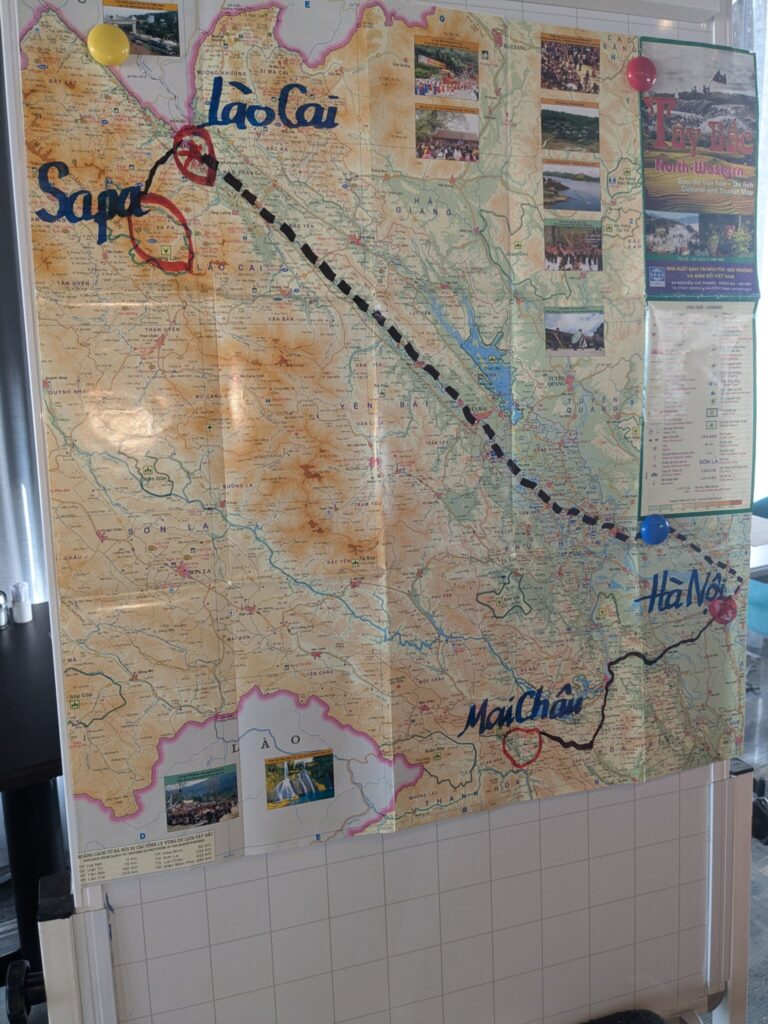
One of the tribes that we are visiting is the Hmong. There are Hmong in Vietnam, Laos and Thailand. During the Vietnam war the Hmong in Loas cooperated with the CIA so when the war was over that they fled to Thailand for safety. Several waves of Hmong immigrated to the US from Thailand so today there are close to 400,000 Hmong in the US.
Durning the bus ride we also learned that there was a border war between Cambodia, China and Vietnam after the war with the US. Much of Sapa was bombed so it was mostly rebuilt after the late 80s. Sapa is very popular with Vietnamese and Chinese residents as a vacation hotspot. It’s high in the mountains, about 6,000 feet, so the weather is quite cool, foggy and , on occasion, rainy. It seemed a little honky tonk when we arrived (but I’m getting ahead of myself).
On the way there we stopped at a cinnamon farm. Vietnam is the second largest producer of cinnamon in the world (Sri Lanka is the first). The cinnamon we cook with is from the bark of a cinnamon tree. Cinnamon trees are very finicky and they have to have very pure water and to grow on the hillsides where they reside.
We met the cinnamon farmer. They have a cooperative and get orders for the bark through the cooperative. They don’t grind the power here. They must cut down the tree (typically when it’s around 7 years old) to harvest the cinnamon. The harvest is in the spring and fall months of the year. The farmer gave us a leaf to chew on and, not surprisingly, it was very cinnamony.
After looking at the cinnamon trees, the farmer invited us into his house for cinnamon tea. It was very tasty.
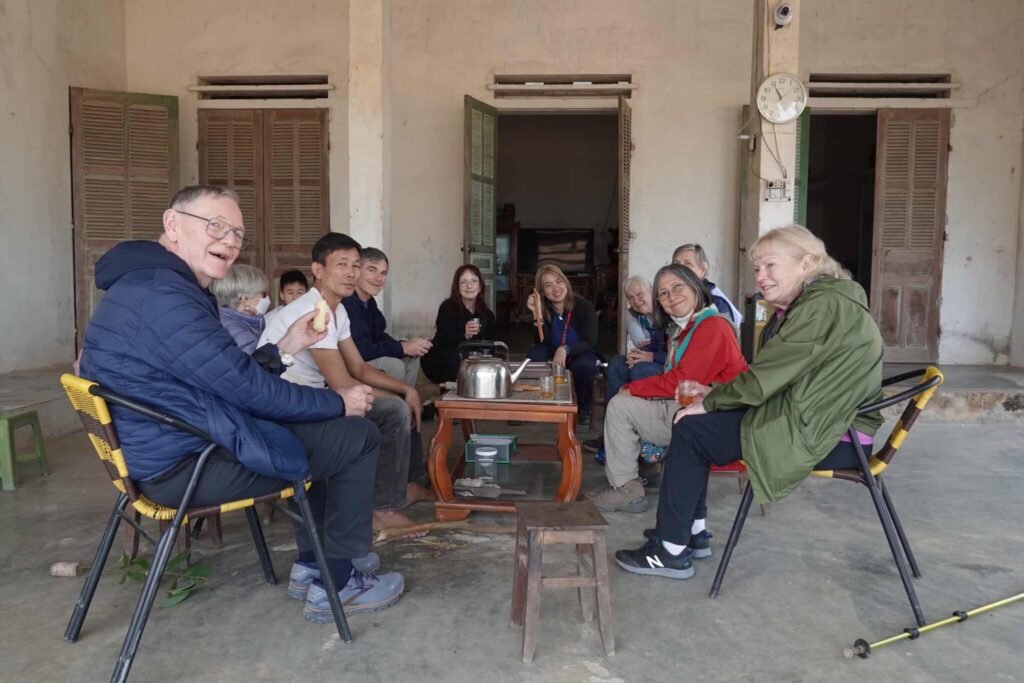
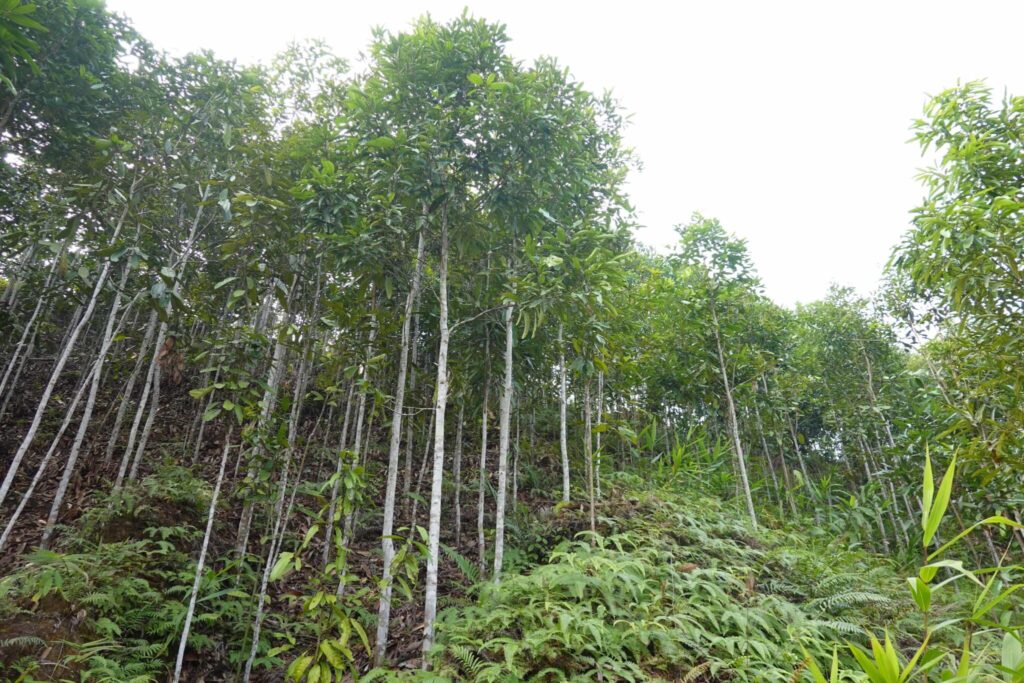
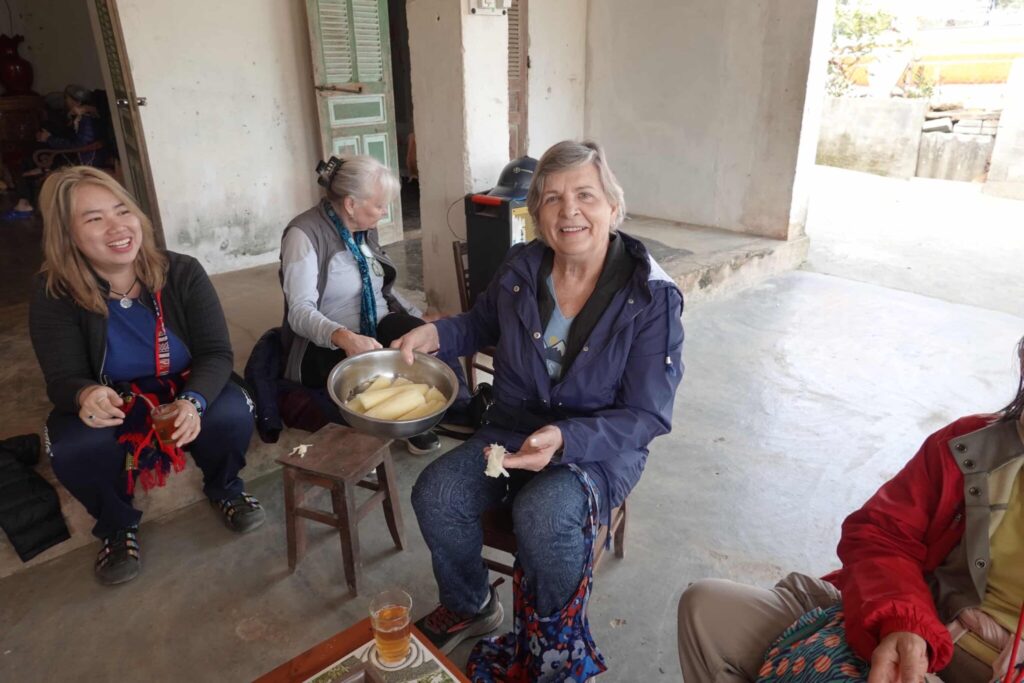
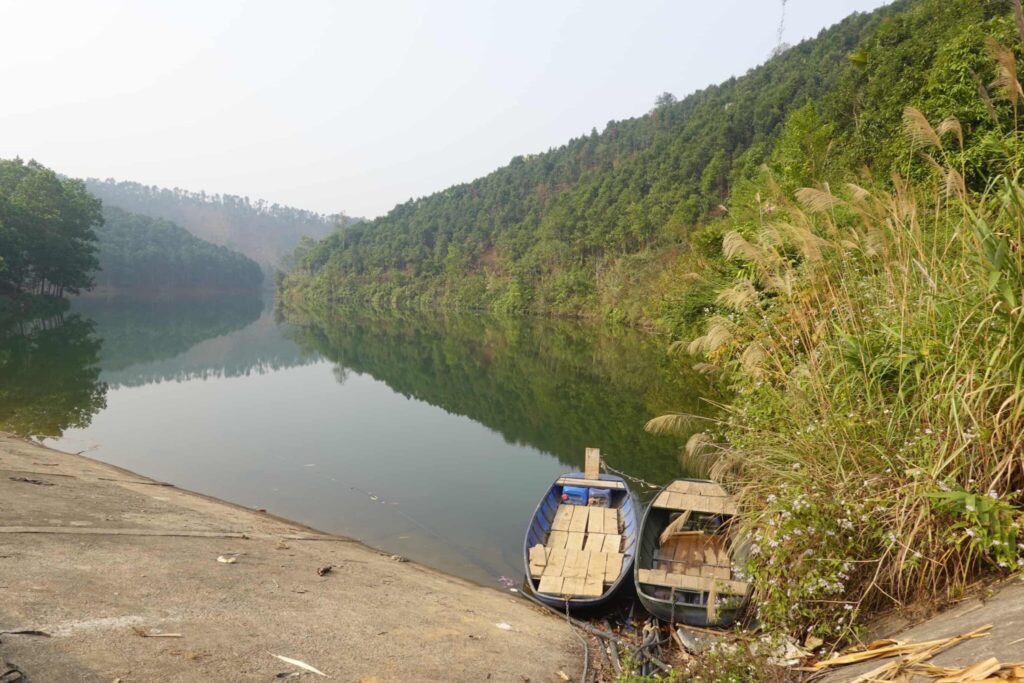
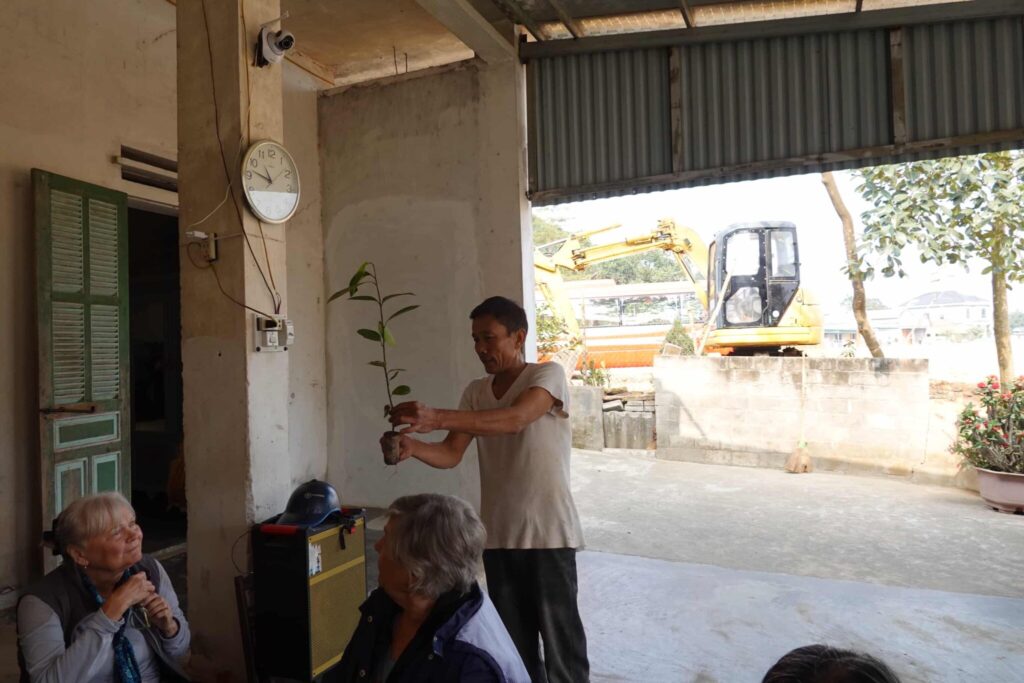
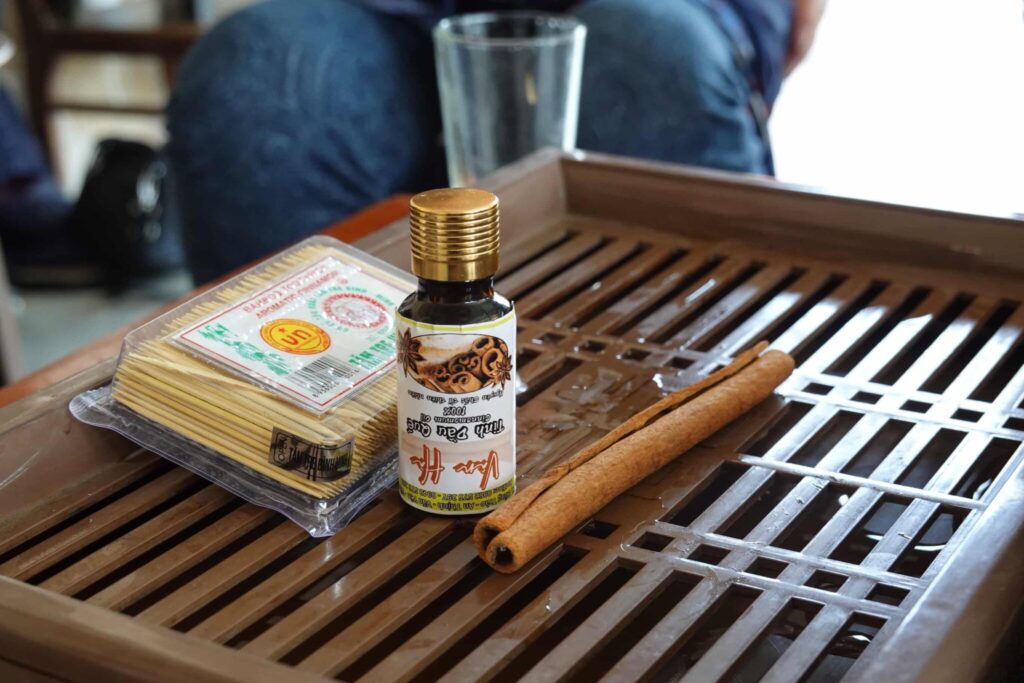
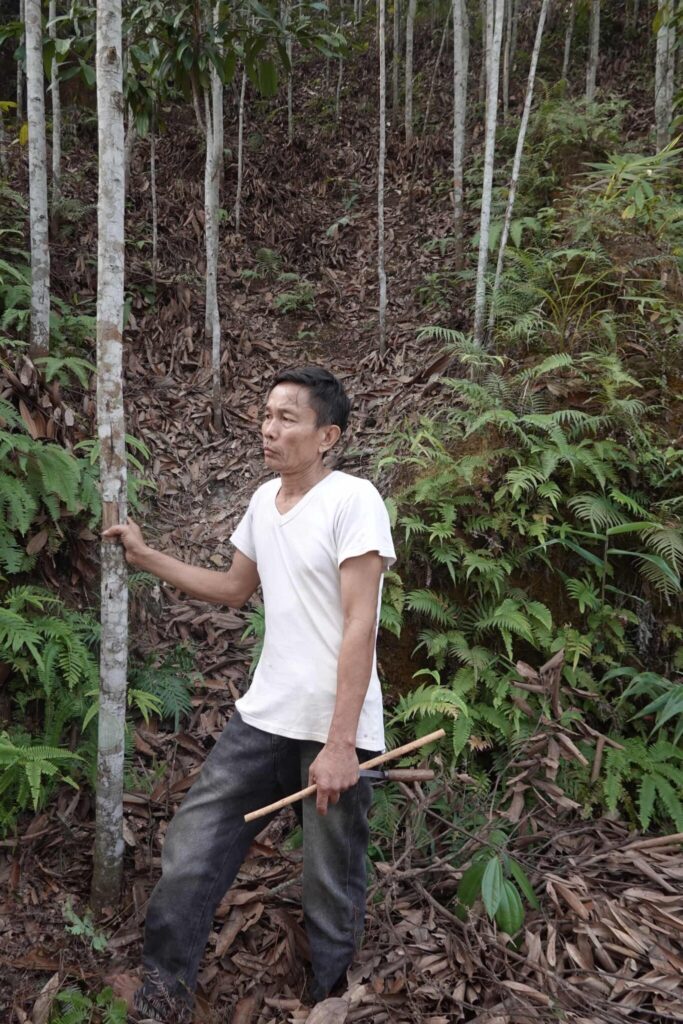
We continued on our way and went to Lao Caí for lunch. We had pizza and several other dishes including luffa or loofa, which is a vegetable. When loofa is dried out it’s a scrubbing sponge. Taste wise it wasn’t bad, a lot like zuchini.
After lunch we returned to the bus for another hour’s drive to Sapa. We got stuck in a very bad traffic jam. A truck seemed to have lost its load of long aluminum extrusions. The truck was by the side of the road, the extrusions were in a ditch and ladies were loading it back onto the truck while men were standing around, maybe directing, mostly gawking.
Eventually we made it to a location where we needed to switch buses. Our bus was under-powered for the steep roads and the switchbacks required familiarity and an extra level of expertise. At nearly 6,000 ft it was getting a little chilly.
At the switch we met our local guide, a very spunky woman named May Linh. She is from the Red Dzao tribe and she took us to her village.en route to Sapa The Red Dzao came from China in the 18th century and the women wear red scarfs on their heads. They marry very young, as young as 14 and have arranged marriages. Traditionally they don’t educate the girls so May Linh initially didn’t go to school. Her English is quite good. She says she learned it mostly from interactions with tourists.
We pulled up to her village, Taphin, and there were ladies there who escorted us around the village, wanting to sell us some of their wares. We learned about the wedding practice in the Red Dzao culture. The girl gets engaged and gets married 1 year later. During that year she must make 1 outfit each for her in-laws, an outfit for her husband, and 7 for herself. She wears all seven outfits on the day of her wedding. Each night after her wedding she takes off 1 outfit until all the outfits are off on the seventh night. After the lady is married she plucks her eyebrows and her hairline.
The outfits you see here are typical of the Red Dzao ladies and the patterns are all hand stitched.
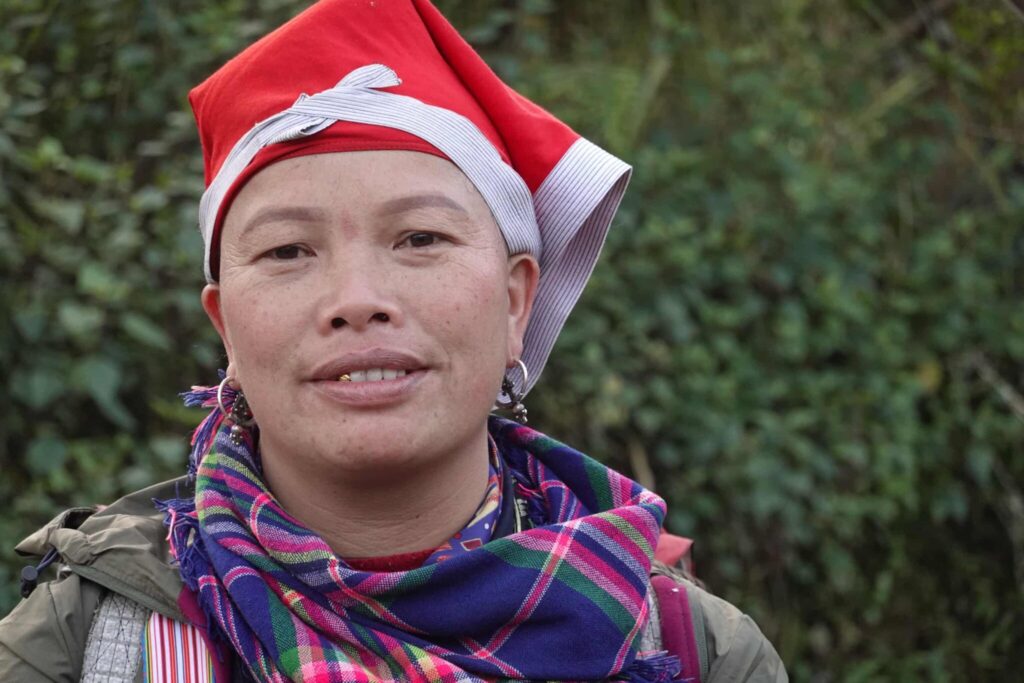
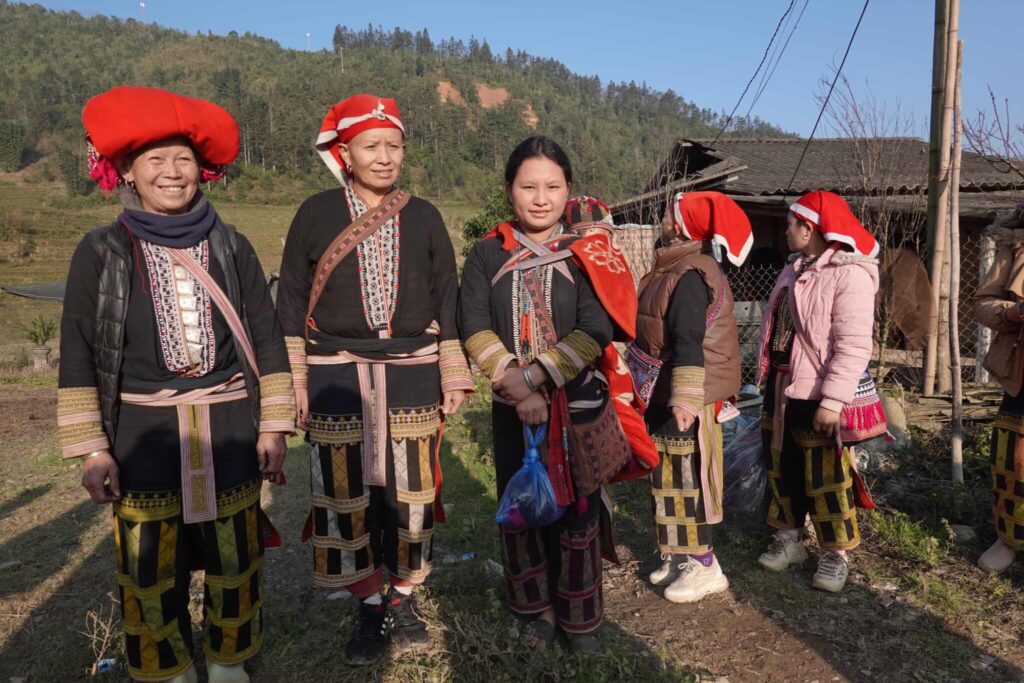
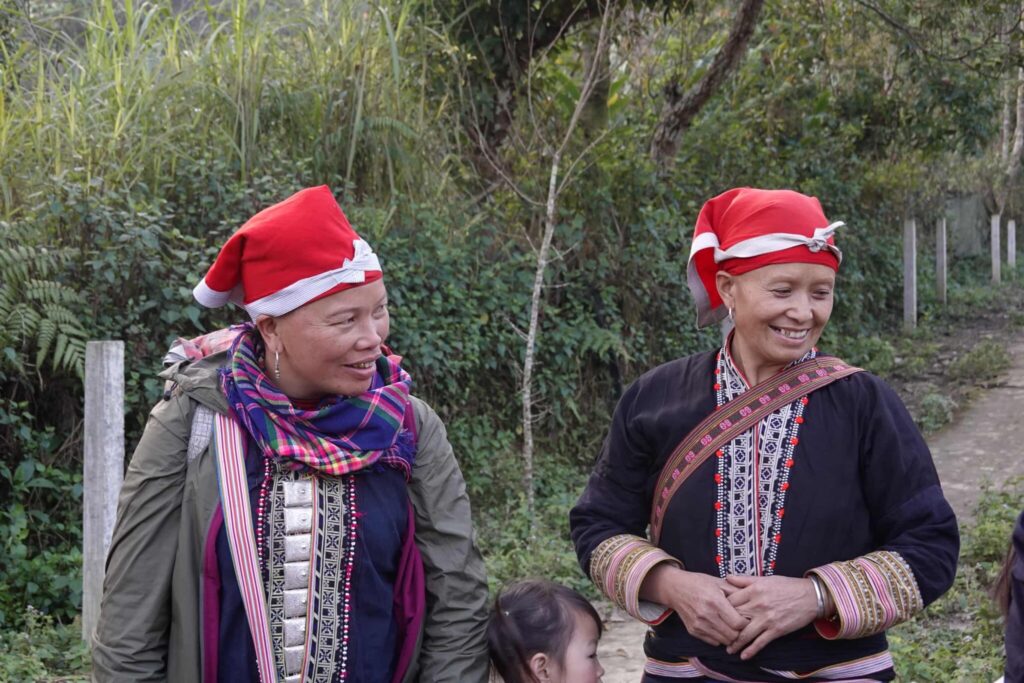
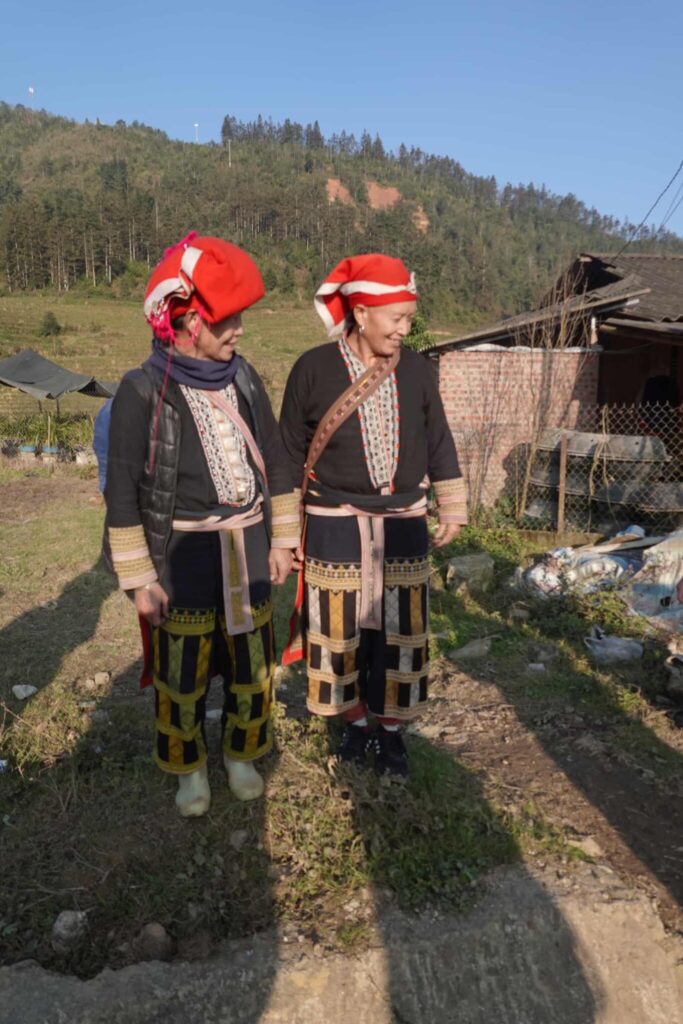
The first stop on our village tour was to see a man making knives. It takes him about 1 day to make one complete knife.
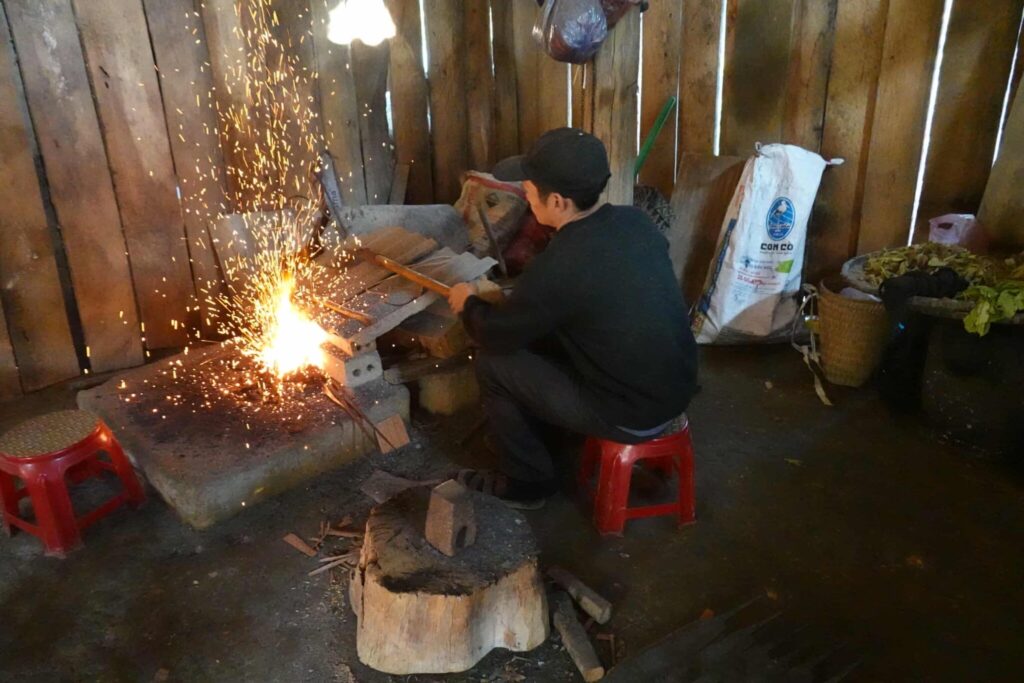
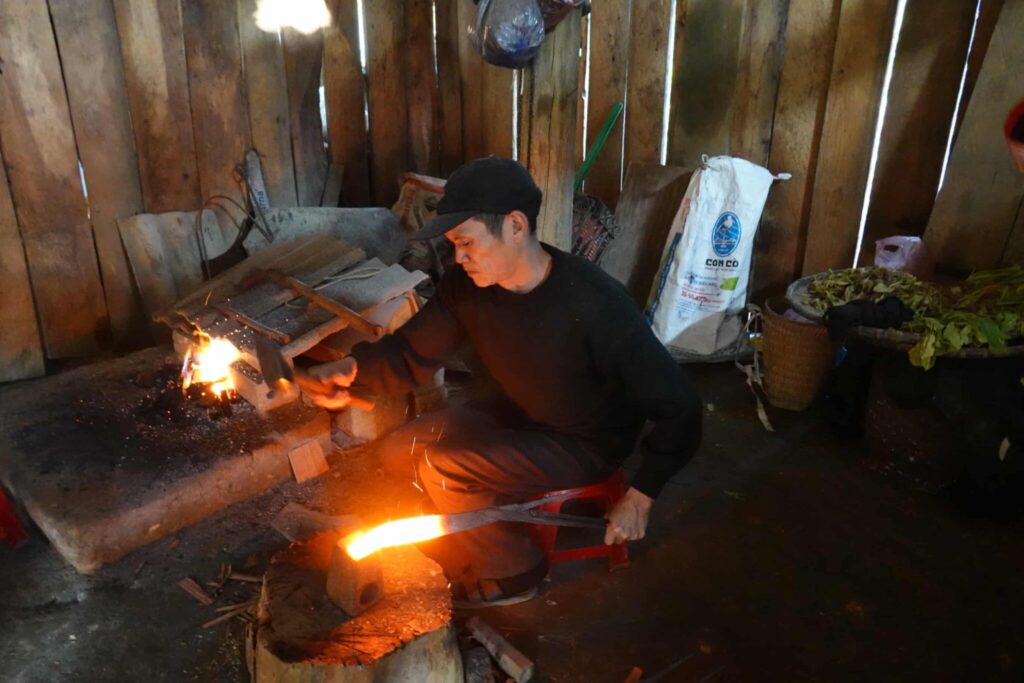
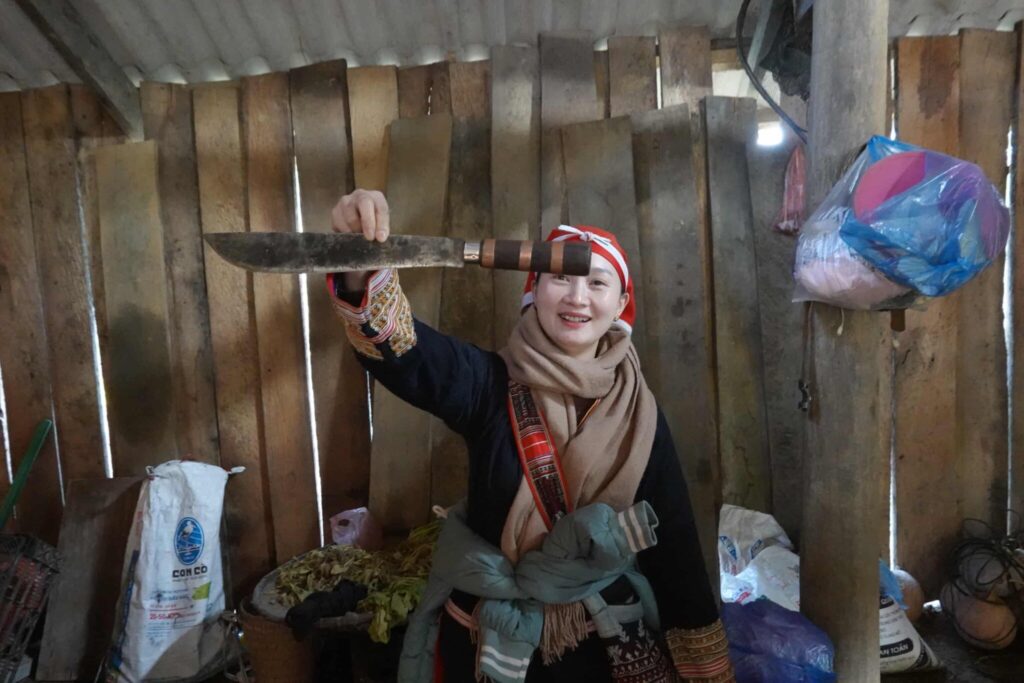
May Linh lives about 4 hours away in her husband’s village so we went to visit her mother’s house. It was large but quite basic. It had a dirt floor. It had three fire pits, one for warmth, one for cooking, and one for making corn whiskey. There she dressed members of our group in her parent’s wedding clothes.
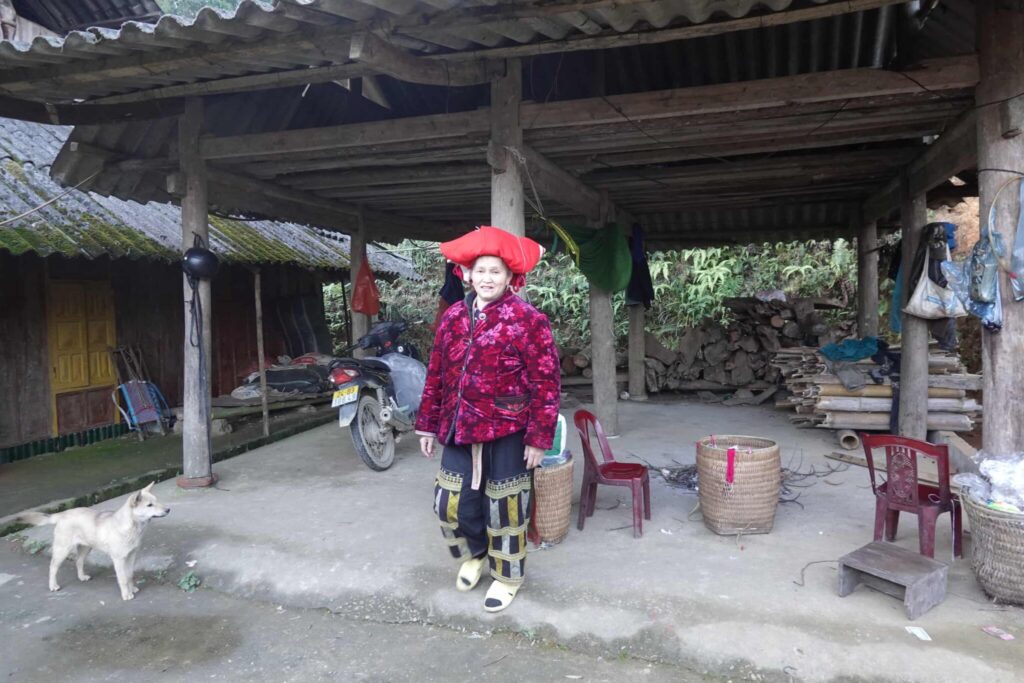
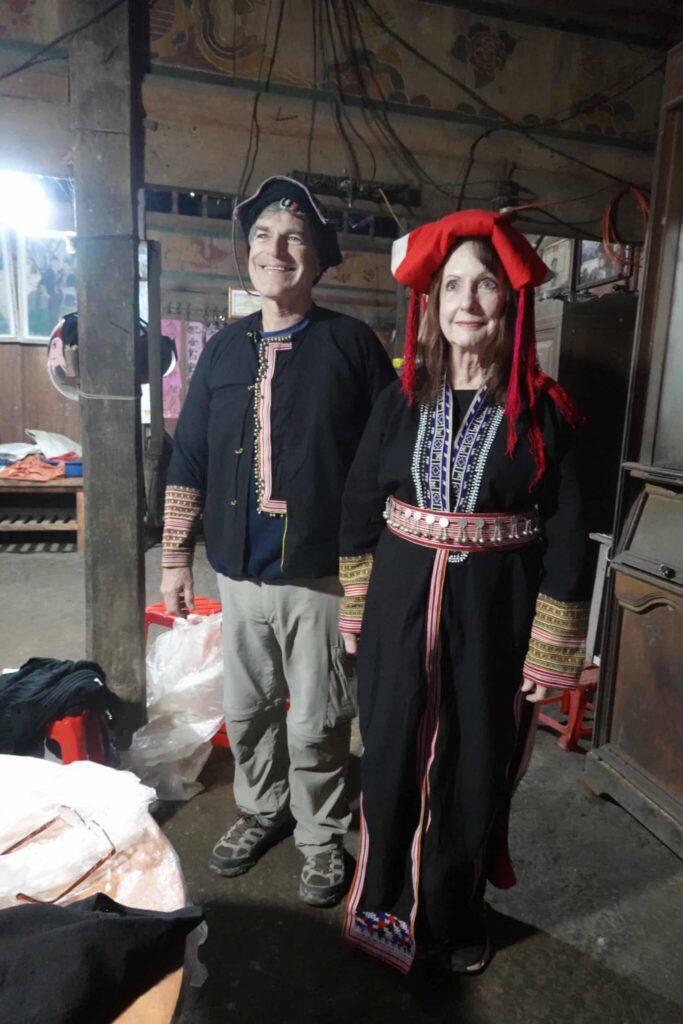
While we were looking around the ladies spread out their handicrafts and the group did a little shopping. Rick and I didn’t buy anything. After the visit to May Linh’s parents home we drove to the hotel and got checked in. Rick went to dinner with the group in the hotel dining room and I went to bed. I really wasn’t feeling well.



Loving the blog. Very detailed, very well written. I almost feel like I’m there. Interesting that the locals all seem to be happy, friendly. Makes you pause and consider how people in the US with so much can be so unhappy and mean to each other. Sounds like you 2 are having a great time. Wondering what new painting or wall ornament will be your souvenir of the trip.